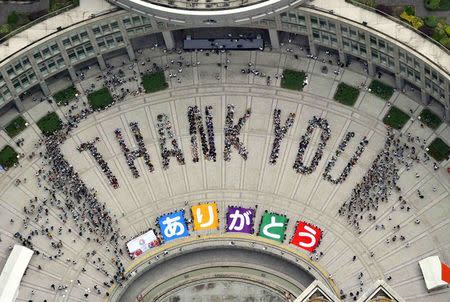Article: Green power blooms as Japan unveils hydrangea solar cell (19 August 2014)
Link: http://www.channelnewsasia.com/news/asiapacific/green-power-blooms-as/1320204.html
This article brings in a new take on green energy with aesthetic values in Japan as it introduces the hydrangea solar cell; the dye –sensitized cells can be doubled as decorations when they are molded into various designs like flowers and animated characters.
Here, Japan is being portrayed to be enhancing its “green” image to the world, this time not only are the Japanese seeking new environmentally-friendly energy resources but they are also trying to incorporate aesthetics appeal to reach out to the public. For instance the citizens are not satisfied with nuclear plants and wind power generation as they still bring in other problems such as radiation and undesirable noises despite being noted as environmentally friendly. Utilizing aesthetic designs like flowers, the industry directly taps on the Japanese innate ‘love for nature’ (Kalland and Asquith, 1997) and market the solar cells as “enjoyable” energy resources. Hence other than Eco-friendliness, “green” encompasses aesthetic aspects too in the case of Japan.
From the article, granted it is noteworthy for Japan to redefine “green” through hydrangea solar cells and appeal to the community, it is imperative to recognize that they still serve little purposes in alleviating the dilemma that Japan is currently facing. The Japanese government is actively pursuing alternative energy to replace nuclear energy due to the rising protests of nuclear usage since the last nuclear plant leaks in Fukushima. While the 20 centimeter wide hydrangea solar cell box can be a great addition to the household decorations, it provides low practical use in terms of overall energy contribution as each box only provides enough energy to charge a smartphone twice. In addition, the article also admitted that the energy hydrangea solar cells can offer is just “small beer” compared to the wind power farms in Japan.
While presented with “enjoyable energy”, the highlight of hydrangea solar cells can also be problematic as it shifts the focus away from the necessitation to break off from nuclear energy reliance. With every new introduction of energy resources, Japan will have more alternatives to depend on. However Japan is in need of substitutes capable of fueling the country instead of fulfilling aesthetic appeals. Given the limited pool of substitutes as of now, the government and research industries will be required to seek even more effective alternatives should Japan choose to be thoroughly free from nuclear reliance in the near future.
References
Asquith, Pamela and Arne Kalland. 1997. ‘Japanese Perceptions of Nature: Ideals and Illusions’. In Japanese Images of Nature: Cultural Perspectives, ed. Arne Kalland and Pamela Asquith. Surrey, Curzon Press: 1-35.


